Flagship Phones of 2025: The Ultimate Guide to This Year’s Leading Smartphones
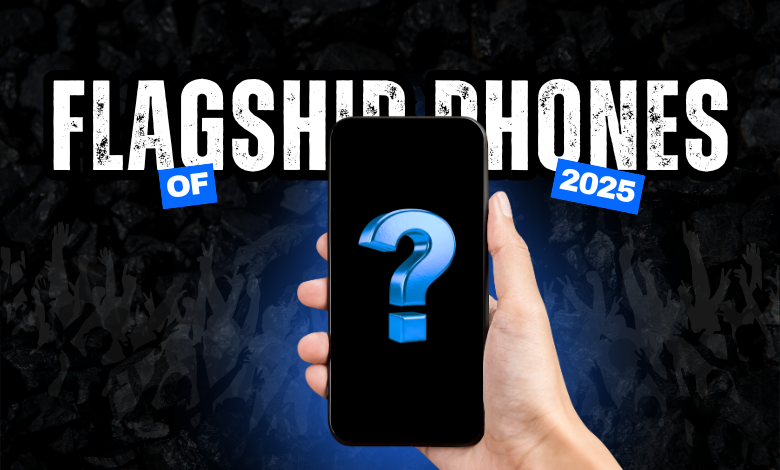
Every year, phone makers try to outdo each other, and 2025 is no different. If you’re thinking about getting a new smartphone, you’re probably hearing a lot about the latest flagships. From Apple’s fresh iPhone 17 lineup to Samsung’s Galaxy S25 series and the newest foldables, there’s a lot to sort through. Some phones are really pushing the limits with better cameras, brighter screens, and batteries that finally last more than a day. But which ones are actually worth your money? Here’s a straightforward look at the flagship phones of 2025, what makes them stand out, and which ones might fit your needs.
Key Takeaways:
- The flagship phones of 2025, like the iPhone 17 family and Galaxy S25 series, offer top performance, long battery life, and great cameras.
- Foldable and flip phones, including the Galaxy Z Fold 7 and Motorola Razr Ultra, are more durable and practical than ever before.
- AI features are everywhere this year, helping with photos, voice assistants, and even battery management.
- Display technology keeps getting better, with brighter screens and smoother scrolling on most flagship models.
- There are strong choices for every budget, from premium powerhouses to affordable flagships that still deliver great value.
Top Picks for Flagship Phones of 2025
Everyone has their favorites, but 2025 has been a wild ride for premium smartphones. There are clear leaders everyone keeps talking about (and for good reason). Whether you’re all about Apple, live in the Android world, or want something seriously different, this year’s best phones are a real mix. Here’s a breakdown, feature by feature and brand by brand.
Apple iPhone 17 Family: Air, Pro, and Pro Max
Apple definitely didn’t sit back this year. The iPhone 17 lineup introduced the slimmest iPhone yet with the Air, and somehow made the Pro and Pro Max even faster and better with the new Apple Silicon A19 chip. If you’re someone who cares about color options, weight, and everyday speed, these stand out. Here’s how the lineup compares:
| Model | Display Size | Battery (hours) | Notable Feature |
|---|---|---|---|
| iPhone 17 Air | 6.1″ | 21 | Light and thin |
| iPhone 17 Pro | 6.3″ | 22 | ProMotion 2.0 |
| iPhone 17 Pro Max | 6.7″ | 25 | Best zoom camera |
- Speedy A19 processor across the range
- iOS 18 brings smoother transitions, more control widgets
- Camera upgrades on the Pro Max are wild for low light
With all this power and polish, it’s sometimes easy to forget these are still the most consistent phones for daily life—apps open fast, calls sound clear, and the battery just keeps going.
Samsung Galaxy S25 Series and Z Fold 7
Samsung kept their foot on the gas too. This year’s S25 series is all about choice, with the S25 Ultra landing right at the top for those who want everything, including the famous S Pen.
- S25 Ultra gets you a massive screen and insane zoom
- Standard S25 and S25+ are slightly smaller, but still pack the Snapdragon 8 Elite chip
- Z Fold 7 turns your phone into a mini-tablet—great for multitaskers
| Samsung Model | Screen Type | Battery (mAh) | Special Highlight |
|---|---|---|---|
| S25 | Flat Dynamic AMOLED | 4,000 | Lightweight choice |
| S25 Ultra | Edge Dynamic AMOLED | 5,200 | Best for S Pen users |
| Z Fold 7 | Foldable AMOLED | 4,800 | Multitasking display |
List of standouts:
- Strong colors and smooth 144Hz screens
- Updates to One UI that really cut down on bloat
- Z Fold 7 is more durable than any foldable before it
Google Pixel 10 and OnePlus 13
Both Google and OnePlus are targeting a different slice of flagship buyers this year. Google’s Pixel 10 puts a spotlight on smart features and photography, while OnePlus 13 is all about speed and charging.
- Pixel 10: Best voice recognition and live translation in any phone
- Pixel’s AI camera does real-time photo edits—no extra effort needed
- OnePlus 13 is practically charging royalty. Plug in and you’re almost full in fifteen minutes
| Phone | AI Features | Charging Speed | Key Benefit |
|---|---|---|---|
| Pixel 10 | Live translate, Call AI | 45W wireless | Clean Android, AI cams |
| OnePlus 13 | Smart notifications | 120W wired | Super-fast charge |
If you need something straightforward that just works, Pixel is calm and polished. OnePlus wins for people who want value and performance in one package.
No matter your needs, 2025’s flagships cover the basics—speed, battery, cameras—but finally set themselves apart with real differences in daily experience.
Breakthrough Features Defining Flagship Phones of 2025
This year’s flagship smartphones really set themselves apart with some surprising capabilities. It’s not all about raw power—what matters are features that make using these devices feel easier, smarter, and more fun each day. Here’s a closer look at the standout advances everyone’s talking about in 2025.
Next-Gen Display Technology: Brighter and Smoother Screens
The displays on 2025’s high-end phones are seriously eye-catching. Manufacturers have pushed brightness levels higher while keeping colors natural and comfortable on the eyes. The smoothness is no longer just about refresh rate numbers—it’s about how responsive everything feels when you scroll, swipe, or play games.
Some numbers from the big brands this year:
| Model | Max Brightness (nits) | Refresh Rate (Hz) |
|---|---|---|
| iPhone 17 Pro Max | 3000 | 120 |
| Galaxy S25 Ultra | 3200 | 144 |
| Pixel 10 Pro | 2800 | 120 |
- Displays are easier to see even in sunlight.
- Ultra-low power always-on modes show notifications at a glance.
- More phones now use LTPO tech for super battery-friendly refresh rates.
If there’s one thing you’ll notice the first time you pick up one of these phones, it’s that the display just feels alive—almost like paper mixed with glass, in the best possible way.
Advances in Mobile AI and Smart Features
This year, high-end phones brought a lot more brains to the table. AI on these devices isn’t just about gimmicks—it actually simplifies tasks and adds convenience where you need it.
Key smart features making a difference:
- AI-powered photo editing: Remove objects, unblur faces, and adjust lighting in seconds without needing any pro skills.
- On-device language translation: Have conversations or read signs in almost any language, in real-time and without internet.
- Smart suggestions: Keyboard and voice assistants now offer eerily accurate suggestions based on context—sometimes before you realize you need them!
Bold claim, but true: You might not even notice some new AI features until you start wondering how you ever managed without them.
Improved Battery Life and Rapid Charging Innovations
Let’s be honest, nobody wants their phone dying halfway through the day. The 2025 flagships don’t just last longer—they recharge far quicker, too. It’s not about adding a bigger battery, but making every watt count.
| Device | Average Screen-On Time | Wired Charging | Wireless Charging |
|---|---|---|---|
| iPhone 17 Pro | 11 hours | 45W (30 min: 60%) | 30W |
| Galaxy S25+ | 12 hours | 65W (20 min: 80%) | 45W |
| OnePlus 13 | 14 hours | 100W (!, 15 min: full) | 50W |
- Charging for just a few minutes gives hours of use.
- Smarter charging routines adjust overnight to protect battery health.
- Energy-saving chips make everything last a bit longer, even with intense use.
These days, stressing over low battery is old news. Plug in while grabbing coffee, and you’re good to go. That’s the biggest practical leap of this phone generation.
Photography and Videography Excellence in 2025 Flagships
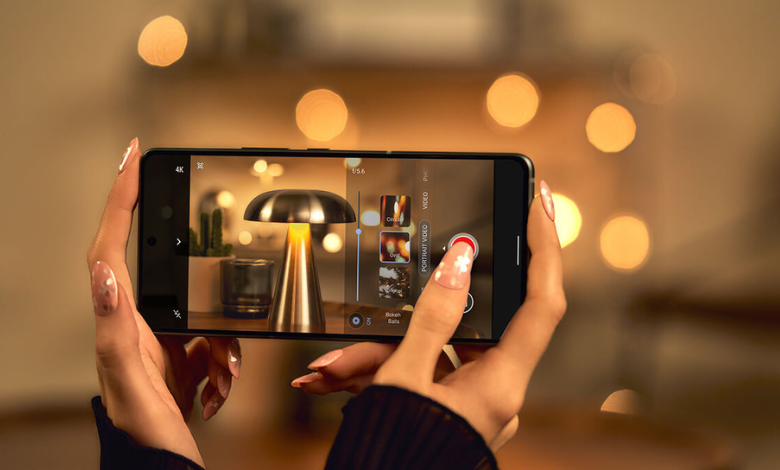
Best iPhone Cameras: iPhone 17 Pro Max Innovations
Apple is still on top when it comes to making phone cameras easy to use. This year’s iPhone 17 Pro Max packs a whole new Photonic Engine for big gains in low light photos and richer color across all three of its main lenses. The autofocus is faster and almost never misses. Cinematic Mode has been tuned up too, now supporting 8K recording with sharper details and steadier focus transitions. While pro photographers might reach for the RAW settings, most people will be amazed just pointing and shooting—portaits look less processed, and faces finally have natural skin tones.
Key upgrades in iPhone 17 Pro Max:
- 48MP triple-lens main system
- Improved Night mode with less blur
- 5x optical zoom that’s actually useful
If you want a phone that just nails photos every time (with no need for editing), the iPhone 17 Pro Max should be high on your list this year.
Top Android Camera Phones: Samsung and Pixel Showdown
On the Android side, Samsung and Google are still battling for the photo crown. The Samsung Galaxy S25 Ultra crushes it with a huge 200MP main sensor, two telephoto lenses (for close or far shots), and tons of shooting options. Its AI shot enhancer can fix blurry faces or blown-out skies with surprising accuracy. Meanwhile, the Google Pixel 10 continues to win over fans for its simple interface and crazy-smart HDR.
Here’s a quick specs table:
| Phone | Main Sensor | Telephoto | Ultra-wide | Selfie | Video Max |
|---|---|---|---|---|---|
| Samsung S25 Ultra | 200MP | 50MP, 10MP | 50MP | 12MP | 8K 30fps |
| Google Pixel 10 Pro | 50MP | 48MP | 48MP | 18MP | 4K 120fps |
| Xiaomi 15 Ultra | 50MP (1-in) | 50MP, 50MP | 50MP | 32MP | 8K 24fps |
Camera Comparison: Low Light, Zoom, and AI Enhancements
Comparing these flagships in real-world conditions shows just how far phone cameras have come. Here are some highlights:
- Low Light: The iPhone 17 Pro Max and Xiaomi 15 Ultra both keep colors looking true in dim restaurants or evening walks. Samsung’s S25 Ultra tends to over-brighten the scene, which some people like, but others don’t.
- Zoom: Samsung rules the zoom game with a crisp 10x optical—details stay sharp even across the park. Xiaomi’s dual telephoto setup makes for some flexible composition, while Apple catches up with a much better 5x zoom this year.
- AI Features: AI editing tools are useful—but sometimes too eager. Magic Eraser on the Pixel 10 can zap photobombers, and Samsung’s Generative AI Photo lets you swap backgrounds fast (sometimes awkward, sometimes amazing). Apple’s Live Photo Sharpen is subtler, gently fixing blur without making images look fake.
Anyone shopping for a flagship phone in 2025 can expect not just amazing hardware, but also smarter software that actively helps your photos come out sharper, clearer, and sometimes even a bit magical.
Foldable and Flip Phones: The New Frontier for Flagship Phones of 2025
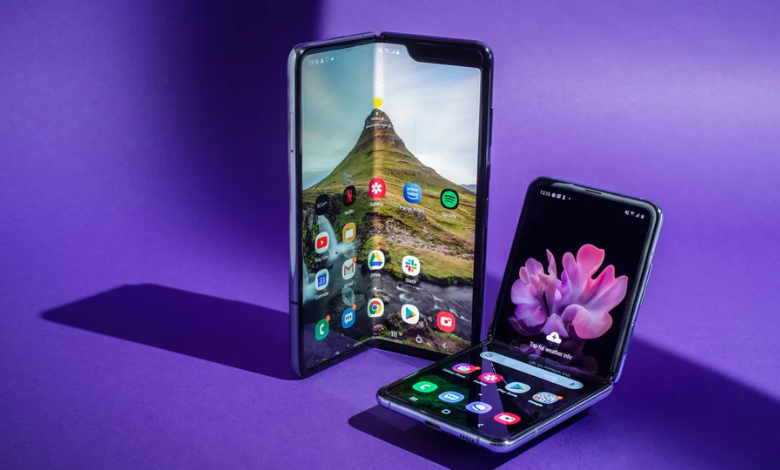
Not too long ago, foldable phones felt like some sort of experiment—quirky hinges, funny aspect ratios, and plenty of skeptics. Now? Foldables are everywhere, and in 2025, they’re not just attention-grabbing novelties. They’re serious contenders for anyone who wants a device that does more than just look flashy.
Samsung Galaxy Z Fold 7: Best Foldable Experience
Samsung keeps doubling down, and the Galaxy Z Fold 7 is really impressive this year. The thing that stands out most is the display—big, smooth, and as close to a tablet as you’ll get from something that still slips into your pocket. There’s less of a crease now, too, which makes reading and watching videos easier on the eyes. Plus, Samsung managed to slim it down a bit so it doesn’t feel quite so brick-like in your hand.
A few standout features from the Z Fold 7:
- Large 7.9-inch inner display, nearly wrinkle-free
- Smoother fold/unfold mechanism
- Even stronger hinge and tougher outer shell
If you’re going to drop real money, you expect quality. This year, Samsung’s foldable feels like it can finally be taken seriously as a main phone.
Motorola Razr Ultra and New Trifold Rumors
Motorola’s still hanging onto its flip legacy—the Razr Ultra (2025) has a dedicated fan base for good reason. It’s compact, zippy, and nails the nostalgia factor. Between the crisp outer screen and how easy it is to snap shut on a call, there’s no other phone that feels quite as satisfying to use on the go. For folks curious about getting into folding phones, the Razr (2025) is a top pick thanks to its highly recommended excellent performance and user-friendly design.
Buzz is also building around new trifold designs. Samsung’s rumored triple-panel phone might finally see the light of day by the end of this year. Two hinges. Three folds. People want a device that transforms between pocket-sized, regular phone, and full tablet—and 2025 looks set to finally deliver.
Durability and Everyday Usability of Foldable Designs
A couple years ago, there was real hesitation about foldable durability. Now, these phones have caught up.
Here’s where most 2025 foldables stand:
| Phone | Claimed Hinge Cycles | Water Resistance | Outer Glass |
|---|---|---|---|
| Z Fold 7 | 400,000+ | IPX8 | Gorilla Armor |
| Razr Ultra (2025) | 350,000+ | IPX7 | Gorilla Glass |
| Trifold Prototype | 250,000* | Unknown | Unknown |
*Prototype numbers, not final.
- Most major foldables now survive at least several years of constant opening and closing.
- Water resistance isn’t perfect, but splashes won’t ruin your day.
- Outer shells and screens use better materials than ever before.
Honestly? If you’re worried about reliability, the 2025 foldable market finally has models you can trust for the long haul. Now it’s actually hard to find one that feels flimsy, which is a big change from the early days.
Performance and User Experience in Leading Smartphones
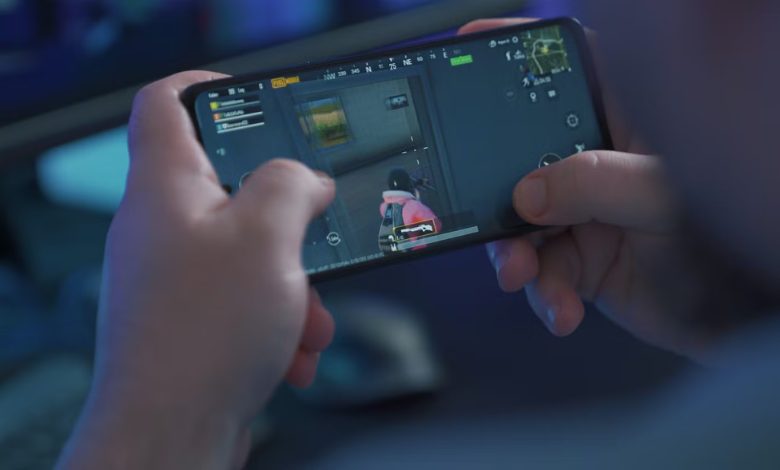
Flagship phones in 2025 are all about quick performance, full-featured software, and a smooth daily experience. Brands are pushing the limits on speed and reliability, but it’s not just about raw power anymore—now it’s a mix of intelligent chipsets, streamlined operating systems, and thoughtful security choices.
Powerful Processors: Snapdragon 8 Elite and Apple Silicon
This year, processors are faster and a lot smarter. The Snapdragon 8 Elite and Apple’s A19 Pro are the headline acts.
| Processor | Core Type | Notable Devices | AI Capabilities |
|---|---|---|---|
| Snapdragon 8 Elite | Octa-core | Galaxy S25, OnePlus 13 | Advanced Camera AI |
| Apple A19 Pro | Hexa-core | iPhone 17 Pro, Pro Max | On-device Siri, Editing |
| Google Tensor G5 | Custom Octa-core | Pixel 10 Pro | Edge Processing, Photos |
What really stands out this year: even mid-session, there’s little to no slowdown, even when switching between demanding apps or games. You might actually start to expect fast, lag-free multitasking from every flagship device.
Operating Systems: iOS 18 vs. Android 15
Both iOS 18 and Android 15 pack new features, but they’re also finding ways to stay familiar. Here’s what’s changed:
- iOS 18 brings more home screen flexibility, system-wide AI suggestions, and better notification filtering.
- Android 15 focuses on customizable privacy controls, quick-share tools, and faster app updates on the fly.
- Both now offer better support for foldable and large displays.
Daily use is about doing what you want, quickly and without fuss. The new OS versions make things feel natural, like your phone knows what you want before you tap.
Security, Software Updates, and Longevity
Keeping your phone secure and updated matters more than ever. Nowadays, major brands promise longer support windows:
- Apple: Updates for at least 6 years,
- Samsung: 5-7 years of Android and security updates (depending on the device),
- Google and OnePlus: At least 4 years of OS upgrades.
Other key improvements:
- Better hardware-level security—face unlock, under-screen fingerprint readers, encrypted storage.
- Faster critical security patches, often pushed in the background.
- Options for users to review and remove app permissions with just a tap.
For most folks, picking a 2025 flagship means you’re set with strong performance and a user experience that feels effortless. The difference is in the details, but no matter which one you get, you’re unlikely to feel left behind anytime soon.
Flagship Phones of 2025 for Every Buyer
Choosing a flagship phone in 2025 is not as straightforward as it used to be. Whether you need a solid value, next-level tools for your creative side, or a device that lasts as long as you do, the range of options has never been wider. Below, you’ll find sensible picks for every kind of user.
Value Options: Best Affordable Flagships
Not everyone wants to spend four figures for a phone, but you still can get standout performance and features on a tighter budget. Here’s a quick look at top affordable flagship models:
| Model | Starting Price | Standout Feature |
|---|---|---|
| Google Pixel 10 | $749 | Superb software updates |
| OnePlus 13 | $799 | Fast charging, clean UI |
| Samsung Galaxy S25 FE | $799 | Balanced daily performance |
- These models skip a few premium extras but still offer that flagship feel.
- You’ll get top-notch screens, smooth software, and good cameras.
- For the price, it’s tough to be disappointed—particularly with how well the latest and best-performing smartphones stack up in real-world use.
Sometimes the best phone for you isn’t the most expensive one—it’s the one that fits your habits, your hands, and your wallet.
Best for Creative Professionals and Power Users
If you create on the go or just need the ultimate device, these 2025 flagships are built for heavy workloads and non-stop productivity:
- Samsung Galaxy S25 Ultra: Packs an industry-best camera set, a big screen, and S Pen support for editing, sketching, and note-taking.
- Apple iPhone 17 Pro Max: New generative AI tools, top-class video options, and robust photo-processing features.
- Google Pixel 10 Pro XL: Excellent for photographers and those who rely on AI-powered tools for workflow and editing.
Pick these models if you need loads of storage, advanced stylus controls, or pro-level editing tools right in your pocket.
Top Picks for Battery Life and Durability
Let’s be honest, all the power in the world doesn’t help if your phone dies by sundown. For those who really need all-day confidence (and maybe even a little more):
| Model | Battery Rating | Key Durability Feature |
|---|---|---|
| iPhone 17 Air | Up to 36 hrs | Aluminum chassis, Ceramic front |
| Samsung Galaxy Z Fold 7 | Up to 32 hrs | Water resistant, reinforced hinge |
| Motorola Razr Ultra | Up to 30 hrs | Ultra-tough folding screen |
- These devices are built for folks who forget their chargers and want something that can take a beating.
- As foldables and classic slabs both catch up in battery and durability, your choice is less about compromise and more about style and need.
For more on real-world rankings and lab-tested results, our regularly updated top-tested phones should be your first stop this season.
Conclusion
So, that’s the rundown of the top flagship phones for 2025. Whether you’re eyeing the latest iPhone 17, the Galaxy S25 Ultra, or something a bit different like the new foldables, there’s a lot to choose from this year. Battery life is better, cameras are sharper, and screens are brighter than ever. But honestly, picking the right phone still comes down to what matters most to you—maybe it’s the camera, maybe it’s the price, or maybe you just want something that feels good in your hand. If you’re not sure, try to check them out in person before you buy. And don’t forget, last year’s models are still really solid and usually cost less. No matter what you pick, phones in 2025 are all pretty great, so it’s hard to go wrong. Happy phone hunting!
Frequently Asked Questions
The top flagship phones for 2025 include the Apple iPhone 17 lineup (Air, Pro, and Pro Max), Samsung Galaxy S25 series, Galaxy Z Fold 7, Google Pixel 10, and OnePlus 13. These models stand out for their great cameras, long battery life, and smooth displays.
The iPhone 17 Pro Max is known for its amazing camera features, but the Samsung Galaxy S25 Ultra and Google Pixel 10 Pro also offer excellent photo and video quality. Each phone is strong in different areas, like zoom, low-light, or AI-powered editing.
Most flagship phones in 2025 will last a full day or more on a single charge, even with heavy use. Some, like the iPhone 17 Pro Max and Galaxy S25 Ultra, can go up to two days with normal use. Fast charging is also common, so you can get hours of use with just a short charge.
Foldable phones like the Samsung Galaxy Z Fold 7 and Motorola Razr Ultra are more durable now than before. They have stronger hinges and better screens, but they still need to be handled with care compared to regular phones. They are built to handle daily tasks, but dropping them can still cause damage.
iOS 18 is the latest software for iPhones, while Android 15 runs on many other phones like Samsung, Google, and OnePlus. Both are fast and secure, but iOS is known for being easy to use and getting updates quickly. Android is more flexible and lets you customize more things on your phone.
Yes! There are affordable flagship options like the Google Pixel 10 and OnePlus 13, which give you top features for a lower price. These phones have great cameras, fast processors, and long battery life, making them a smart choice for buyers on a budget.


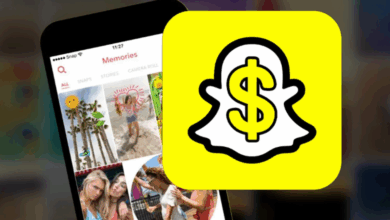
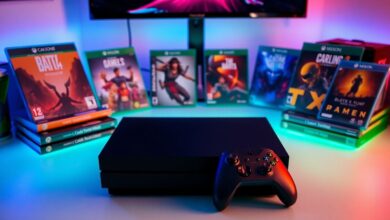
Great overview! The flagship phones of 2025 are pushing boundaries with advanced features and performance. The Samsung Galaxy S25 Ultra stands out with its impressive 200MP camera and AI enhancements, while the Google Pixel 10 Pro continues to impress with its smart HDR capabilities. It’s exciting to see how these devices are shaping the future of mobile technology.
Thanks, Zoya! Yeah, the S25 Ultra and Pixel 10 Pro are seriously raising the bar this year. Can’t wait to see what the next generation brings.